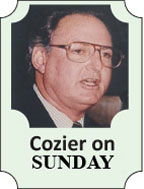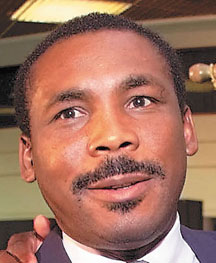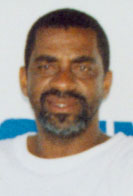IT is remarkable how West Indies cricket manages to create, often out of nothing at all, the never-ending controversies that continue to harm and embarrass it.
The latest cropped up last week to throw Barbados cricket into the same state of confusion as is now habitual at regional level. It centred around the choice of the team for the current match against Guyana and eventually led to the resignation, en bloc, of the selection panel of three, headed by George Linton, the leg-spinner of the Eighties, after the board of the Barbados Cricket Association (BCA) did not endorse two of their decisions.
The situation was not unique.
 In 2007, the West Indies selectors (chairman Gordon Greenidge, Andy Roberts and Clyde Butts) threatened to walk the same path as their Barbados counterparts have now taken when the executive of the West Indies Cricket Board (WICB) knocked back their recommendation of Chris Gayle as captain for the ODI series in England in 2007 instead of Darren Ganga. Under pressure, it reinstated Gayle who stayed in the post until his removal in 2010.
In 2007, the West Indies selectors (chairman Gordon Greenidge, Andy Roberts and Clyde Butts) threatened to walk the same path as their Barbados counterparts have now taken when the executive of the West Indies Cricket Board (WICB) knocked back their recommendation of Chris Gayle as captain for the ODI series in England in 2007 instead of Darren Ganga. Under pressure, it reinstated Gayle who stayed in the post until his removal in 2010.
Both Gayle and Brian Lara complained, during their time at the helm, of uncooperative selectors. Lara only hinted at consequent resignation, Gayle actually quit before he was persuaded otherwise by Julian Hunte, then and, ironically, still WICB president.
The cliché that it is a thankless task is well worn but valid all the same. Selection committees are not entirely autonomous but have to ultimately answer to those who appoint them.
In the latest case, Linton and his colleagues were aware a new captain was needed, since a back problem had sidelined Kirk Edwards. Replacements also had to be found for Tino Best and Kemar Roach, who were with the West Indies squad preparing for the forthcoming ODI series against Australia, and Fidel Edwards, away in South Africa engaged in their Twenty20 league.

When Keith Holder, a seasoned cricket journalist with solid contacts built up over many years, named the team on his weekly radio programme on the night it was picked, it was clear that what he boasted was “a scoop” would be authentic.
According to Holder, Shane Dowrich, the 20-year-old wicket-keeper, a graduate of the High Performance Centre with no captaincy experience, even for his club, was the chosen skipper.
Other sensations were the inclusion of 35-year-old Pedro Collins, the left-arm swing bowler who appeared just back from a stint in club cricket in Australia to help out in the nets, and the exclusion of Ryan Hinds, the former captain, for disciplinary reasons.
It was not far-fetched to assume that Holder got his information straight from a selector’s mouth. The problem was that the chosen names had not been yet ratified by the BCA.
When they were officially released a few days later, Shamargh Brooks, a former West Indies under-19 captain who was yet to play a match for the season, was captain, Dowrich vice-captain and Hinds still in the squad.

While Dowrich’s elevation was a surprise to most – a premature imposition for one so young was the general feeling – it was the judgment of selectors presumably appointed on the basis of their known cricketing acumen. Its reversal signaled that they had lost the BCA’s confidence and resignation had to be their principled conclusion.
There was one other point that upset the BCA board. Conde Riley, the vice-president, stated that, in Hinds’ case, the selectors had not followed the “correct process as set out in section 4 of the BCA’s code of conduct.
“It is for the disciplinary committee to make decisions regarding disciplinary matters,” he pointed out, without revealing whether the matter would now be dealt with by “the correct process.”
As a WICB director, Riley might have pondered the link with the continuing saga over Gayle’s eligibility for West Indies selection.
The “correct process” in that case would also have been to lay the charges against the former captain before the disciplinary committee. Had it been so, the matter would surely have been long since settled, one way or the other.
Instead, the case was determined within the board and has become increasingly embroiled in tiresome, divisive exchanges between chief executive Ernest Hilaire and Gayle and now even more seriously between Hilaire and Jamaica’s prime minister Portia Simpson Miller.
******************
TINO BEST credits ‘Fire in Babylon”, the documentary highlighting Viv Richards and the times when the West Indies ruled supreme, for his new-found attitude. Other current players mention it as a motivating factor.

They should find further inspiration in the achievements of another West Indies team of current vintage. While the men continue to flounder in the lower reaches of the international tables, their female counterparts are making rapid progress towards the peak of their game.
Their recent triumph over India in the home series, both in the Twenty20s and ODIs contests, was over opponents, ranked fourth to the long established dominant trio of Australia, England and New Zealand.
It was further evidence of their continuing rise following their semi-final placing in the Twenty20 World Cup in the Caribbean in 2010 (when they defeated England on the way) and their claiming of the ICC Women’s Challenge in South Africa later that year. Contrast those results with others not so long ago – defeat in all six ODIs by Sri Lanka at home in 2003 and all five on a tour of India a year later.
Now the “amazing” (to use coach Sherwin Campbell’s term) Stephanie Taylor, aged 20, is ranked No.1 on both the ICC’s batting and all-rounders’ list. No male West Indian has come close to such a combination since the system was introduced.
The dashing Deandra Dottin, also 20, is No.7 in the batting. Her 38-ball 100 (with nine sixes) against South Africa in St.Kitts in the World Twenty20 in 2010 remains the fastest in the shortest form of the game by either woman or man. Move over, Chris Gayle!
Taylor rates fifth among the bowlers, spinner Aisal Mohammed sixth. Captain Merisa Aquillera and Juliana Nero (batting) and Shannel Daley (bowling) are in the top 20.
Women’s cricket remains a peripheral sport, both internationally and regionally. But the WICB has begun to pay it more attention, placing players on retainer contracts, retaining Campbell as full-time coach and organizing more bi-lateral series and an annual regional tournament.
Still, especially in these parts, it receives less publicity than it deserves. It is not constantly torn by the strife between board and players association. It has been hardly noticed by politicians, if at all. No selection panel has had to resign.
Come to think of it, that might well explain why the women are doing so well. The men should take note.





